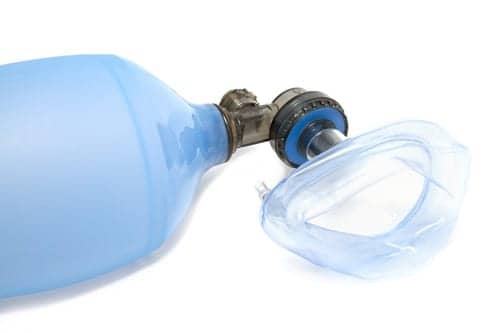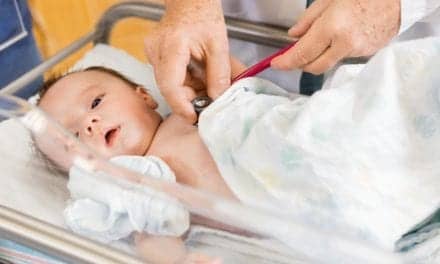When the novel coronavirus pandemic hit in March of 2020, large medical facilities reinvented the way they deliver critical care training, and ushered in new tools to the frontlines against COVID-19.
By Lisa Spear
When the novel coronavirus pandemic hit in March of 2020, much of the world ground to a halt, but large medical facilities had no choice but to ramp up their operations in preparation for an impending flood of new patients, reinventing the way they deliver critical care training, and ushering in new tools to the frontlines of the battle against COVID-19.
At some medical centers, the majority of physicians, from optometrists to pathologists, were called upon to retrain in critical care medicine, as was the case at the Cleveland Clinic in Ohio. In a matter of two weeks, the Cleveland Clinic pivoted to retraining their clinician workforce, developing online training modules in CPR and resuscitation. They also invested in Lucas devices, high-performance cardiopulmonary resuscitation (CPR) mechanical chest compression-decompression systems.
“We were gearing up because we weren’t sure we were going to have enough physicians in the critical care setting to actually care for the first wave of critically ill patients in the first wave of the pandemic,” said critical care program director at the Cleveland Clinic Neal Chaisson, MD, who was charged with launching the clinic’s educational initiative at the start of the pandemic. “The goal was essentially to quickly train everybody to step up a level,” said Chaisson. The pandemic, he said, forced him and his colleagues to rethink everything about how to continue in-person training and how to maximize the effectiveness of remote, didactic learning, and continue resuscitation trainings. “From a training standpoint, it was incredibly frustrating because you find yourself having to reevaluate the most mundane of things, when previously you just dusted it off the playbook and put it into action, hit the play button, and didn’t have to think about it,” he said.
In addition to switching to educational modules online, his team established in-person resuscitation training in large meeting rooms with a maximum of two people present. While keeping person-to-person contact to a minimum, the trainings covered skills such as intubation, mechanical ventilation basics, and CPR.
An onsite American Heart Association (AHA) training facility at the Cleveland Clinic held sessions on how to use the clinic’s new Lucas devices. With guidance from an AHA-accredited trainer, clinicians learned how to use the device on manikins before deploying it in the field. By practicing resuscitation techniques on manikins, clinicians can get comfortable with CPR and high-tech manikins can collect data about how effective a clinicians’ compressions are. Resuscitation training manikins come in many shapes and sizes. For instance, a newborn patient simulator called the Super Tory is developed for training of neonatal care specialist in real environments.
Super Tory has active movement, can be intubated and supported by a ventilator. In addition, the manikin can be connected to real monitors such as EKG, pulse oximetry and even be defibrillated with real energy, explained James Archetto, vice president of US direct sales at Gaumard Scientific. “These capabilities allow Super Tory to simulate complex clinical conditions and respond to interventions with unparalleled realism,” said Archetto.
Super Tory is wireless and tetherless to ensure continuity of care as she is moved from the labor and delivery room to the neonatal intensive care unit. Super Tory can be treated anytime, anywhere and remains fully functional in transit due to an internal, rechargeable battery that provides up to eight hours of operation.
A more standard option, AmbuMan Advanced is designed for advanced life support training and comes outfitted with several high-tech features. AmbuMan Advanced incorporates algorithms to keep track of airway management, ECG simulation, defibrillation, and other metrics. With help from the browser-based Ambu Manikin Management Module, clinicians have wireless control and access to documentation and monitoring of the performance of the trainees.
Many manikins can be used for both manual and mechanical resuscitation training. Providers at the Cleveland Clinic intensive care unit trained on manikins using the LUCAS devices at the start of the pandemic. The Lucas machines enabled fewer providers to have to come in close contact with infected patients and meet the needs of critically ill COVID patients.
“We got these devices so that we wouldn’t have to bring provider after provider into a patient’s room and potentially contaminate a bunch of people,” said Chaisson.
Other than keeping clinicians safe, when using a mechanical CPR device, human error is less of a concern since the machines are automated. When a clinician performs CPR manually, with their hands alone, there is great variability in the depth of their compression, as well as the pace. The clinician may become tired or fatigued and not be able to continue.
On the other hand, CPR machines like the LUCAS can go on for many hours with consistency to provide critical resuscitation efforts for cardiac arrest patients.
“The Lucas device is an amazing device. When used properly, it gives you high quality CPR, and you could sit there and do it for 20 hours or until the batteries died,” said Chaisson. He explained that the purchase of the Lucas machines is a silver lining that came out of the pandemic. “That has allowed us to extend our Lucas use for CPR to the majority of patients in the ICU, that in my opinion has provided us an opportunity to provide higher quality of care to patients who have undergone cardiac arrest.”
While Cleveland Clinic decided on the LUCAS device, there are a number of other mechanical CPR options available. The AutoPulse Resuscitation System from Zoll functions in a similar way, enabling continuous circumferential chest compressions.
According to the manufacturer, the AutoPulse Resuscitation System is designed for emergency medical service professionals on the move. The compact technology delivers automated compressions even while patients are being transported, descending down stairwells, around sharp corners, or even in a small elevator.
While mechanical chest compression-decompression systems have enabled providers to have less exposure to COVID patients, since vaccinations became widely available to healthcare providers in December, many operations have gone back to normal.
Chaisson explained that a 100% uptake of vaccinations among physicians in the critical care department at the Cleveland Clinic, coupled with the strict and consistent use of masks, have led to zero transmission among physicians in his department for the past 11 months. “We know that transmission of COVID is significantly reduced when everybody is wearing a mask and when everybody is vaccinated,” he said. “We are swimming in COVID, all day, every day, so if you want a case study in how to not get COVID, come hangout in the ICU because we are doing it very effectively.”
“So the training environment without an active COVID patient is quite safe, so that risk is substantially reduced compared to the normal environment that we are working in,” he said. “We have essentially normalized our ability to train.”
That’s not to say that everything has gone back to the way things were in 2019. Much of the didactic training, once taught in-person, now lives online. Some elements of training, Chaisson thinks, will not go back to the way things were pre-pandemic. Zoom meetings, and Microsoft Teams presentations, he said, have become commonplace and are here to stay.
RT
Lisa Spear is associate editor of RT. For more information, contact [email protected].









